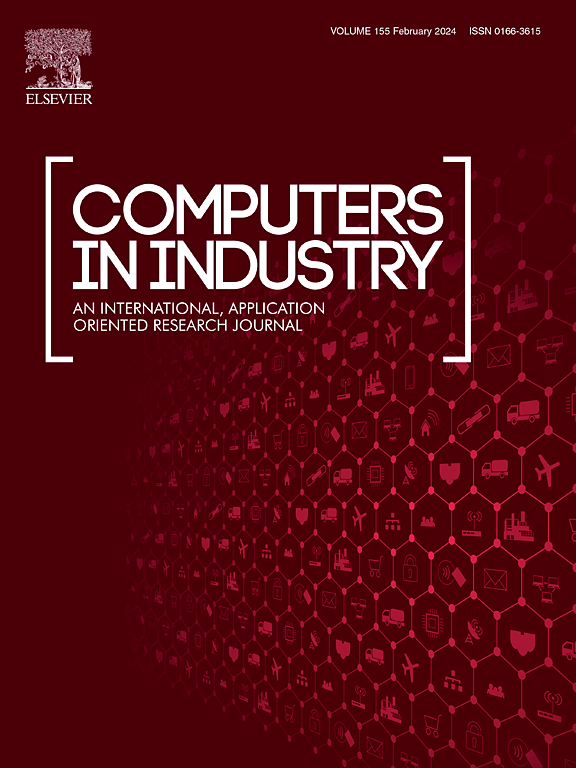用于预测印刷电路板生产周期的瓦瑟斯坦分布稳健学习法
IF 8.2
1区 计算机科学
Q1 COMPUTER SCIENCE, INTERDISCIPLINARY APPLICATIONS
引用次数: 0
摘要
本文提出了一种 Wasserstein 分布稳健学习(WDRL)模型,用于预测多条生产线上高度混合的印刷电路板(PCB)订单的生产周期时间。PCB 生产周期对于优化生产计划至关重要。然而,由于印刷电路板的设计、生产线配置、订单组合和人员等因素的影响,很难预测印刷电路板的生产周期时间。此外,在实际生产情况中,特征数据的干扰很大,使得传统的预测模型不准确,尤其是在有新数据的情况下。因此,我们建立了一个 WDRL 模型,推导出了预期损失函数的严格上限,并根据该上限重新制定了一个可操作的等效模型。为了证明这种方法的有效性,我们从一家全球领先的显示器制造商处收集了与表面贴装技术(SMT)生产线相关的数据,用于计算实验。此外,我们还在训练和测试数据集中设计了扰动实验,以验证 WDRL 模型处理扰动的能力。我们还将这一方法与其他机器学习方法进行了比较,如支持向量回归与共生生物搜索相结合、决策树和核极端学习机等。实验结果表明,WDRL 模型能对印刷电路板周期时间做出稳健预测,有助于在不确定情况下有效规划产能,避免生产过剩或不足。最后,我们将 WDRL 模型用于实际 SMT 生产,预测生产周期时间,并将其设定为生产目标。自 2022 年 9 月实施以来的 20 个月中,我们观察到实现率达到 98-103%。本文章由计算机程序翻译,如有差异,请以英文原文为准。
Wasserstein distributionally robust learning for predicting the cycle time of printed circuit board production
This paper proposes a Wasserstein distributionally robust learning (WDRL) model to predict the production cycle time of highly mixed printed circuit board (PCB) orders on multiple production lines. The PCB production cycle time is essential for optimizing production plans. However, the design of the PCB, production line configuration, order combinations, and personnel factors make the prediction of the PCB production cycle time difficult. In addition, practical production situations with significant disturbances in feature data make traditional prediction models inaccurate, especially when there is new data. Therefore, we establishe a WDRL model, derive a tight upper bound for the expected loss function, and reformulate a tractable equivalent model based on the bound. To demonstrate the effectiveness of this method, we collected data related to surface mounted technology (SMT) production lines from a leading global display manufacturer for our computational experiments. In addition, we also designed experiments with perturbations in the training and testing datasets to verify the WDRL model’s ability to handle perturbations. This proposed method has also been compared with other machine learning methods, such as the support vector regression combined with symbiotic organism search, decision tree, and kernel extreme learning machine, among others. Experimental results indicate that the WDRL model can make robust predictions of PCB cycle time, which helps to effectively plan production capacity in uncertain situations and avoid overproduction or underproduction. Finally, we implement the WDRL model for the actual SMT production to predict the production cycle time and set it as the target for production. We observed a 98–103 % achievement rate in the last 20 months since the implementation in September 2022.
求助全文
通过发布文献求助,成功后即可免费获取论文全文。
去求助
来源期刊

Computers in Industry
工程技术-计算机:跨学科应用
CiteScore
18.90
自引率
8.00%
发文量
152
审稿时长
22 days
期刊介绍:
The objective of Computers in Industry is to present original, high-quality, application-oriented research papers that:
• Illuminate emerging trends and possibilities in the utilization of Information and Communication Technology in industry;
• Establish connections or integrations across various technology domains within the expansive realm of computer applications for industry;
• Foster connections or integrations across diverse application areas of ICT in industry.
 求助内容:
求助内容: 应助结果提醒方式:
应助结果提醒方式:


